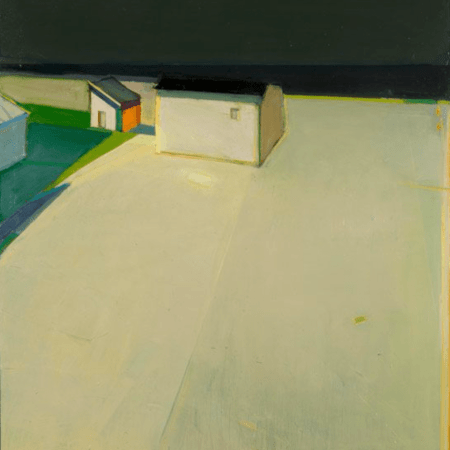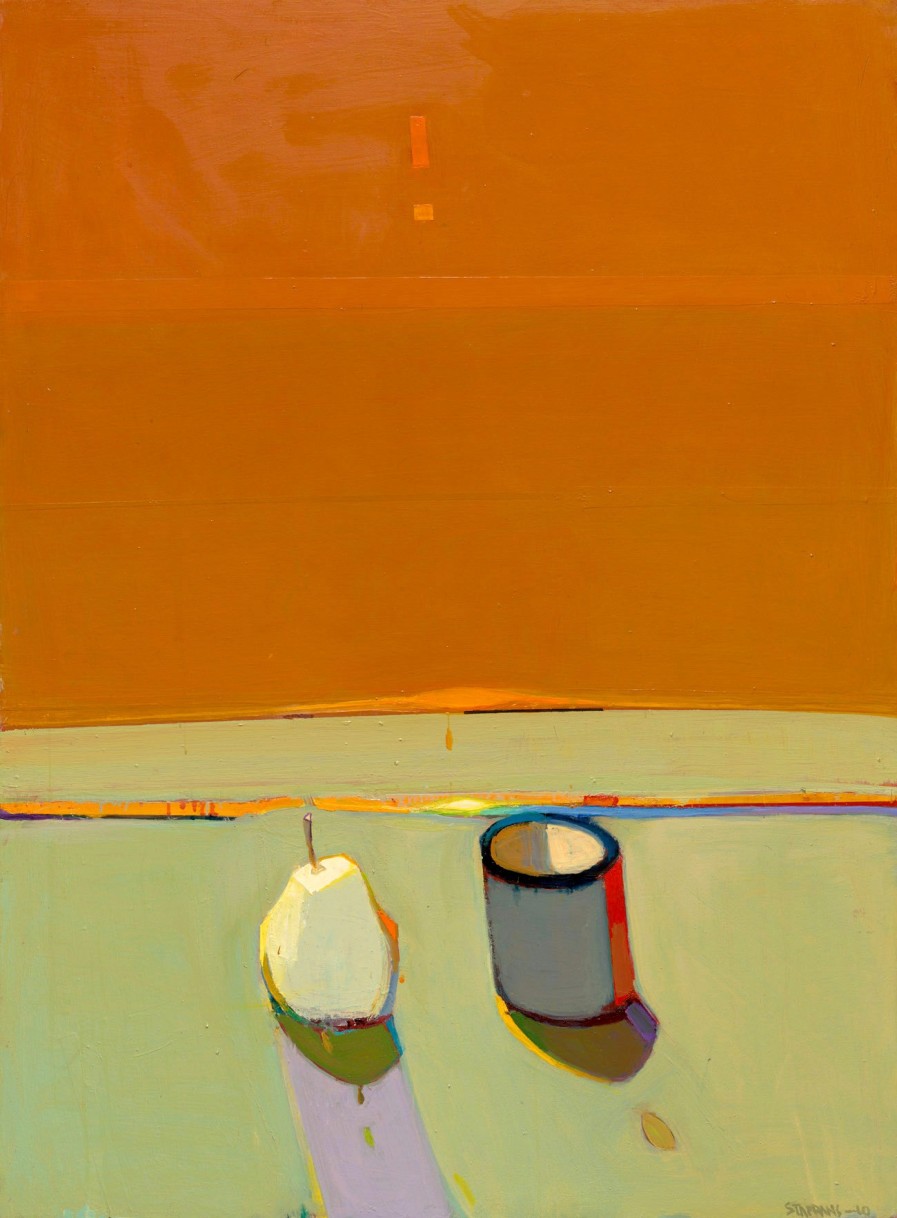
"To the question of what turns an ordinary picture into a respectable painting, my suggestion is rather modest: To earn its name, a painting has to possess a little 'magic.'" Raimonds Staprans
Hackett Mill presents Raimonds Staprans: Paintings, an exhibition celebrating the luminous still lifes, landscapes and seascapes of this noted Bay Area artist. In this new body of work, Staprans continues to explore the formal and aesthetic concerns of color and light within an increasingly minimalist composition.
Raimonds Staprans (b. 1926 Riga, Latvia) is best known for his depictions of simple, recognizable objects such as fruit, paint cans, chairs and barns, which are rendered in brilliant color and set against a flattened, linear ground. His work has eluded classification for decades, as it stubbornly straddles the line between realism and abstraction.
Blocks of color are defined by strong diagonal elements in new landscapes such as Painter's Cove and White Artichoke Fields. Layers of pigment create subtle variations between these fields of color. Staprans says, "The color on the painting should be greater than what comes out of the tube and you achieve that by manipulating colors around it...I like playing around with the color volumes. The color changes in relation to what's around it and I think that's the basis of painting. For me, it's the joy and mystery of painting."
These nuances of color are also the result of Staprans' elaborate editing process. He often 'erases' elements from his compositions by painting over them, but he purposefully leaves phantom shapes behind as a way of demonstrating his desire and ability as an artist to "rearrange the world. If you are a painter, you want to rearrange nature...to be in control over your life, over people. The more control we have...the happier we are. I think we are all deserving of this control, and it's not a bad thing."
These new canvases are more minimal than his previous compositions, some of which featured dozens of oranges rolling off of the edge of the canvas, or a folded work table with painted outlines of its fully-extended position. Staprans seems to have harnessed that energetic disorder by moving a more simplified and singular subject to the center of the canvas. The new energy of the painting is not an implied physical movement, as with the earlier oranges or table leaf, but rather with a source of light. In Sunflower 3 Staprans employs a new formal technique where the subject (the flower) and the horizon line intersect to divide the canvas into equal quadrants, each with a slightly different hue. These variations suggest four different intensities of light refracting off of the singular flower, perhaps acting as a temporal reference. Peter Selz, art historian and founding director of the Berkeley Art Museum, says "light is the chief protagonist in Staprans' paintings."
Raimonds Staprans immigrated with his family to America in 1947 after fleeing the Soviet invasion of Latvia. He studied art at the University of Washington under Alexander Archipenko and Mark Tobey and later obtained his master's degree at UC Berkeley where he studied with Hans Hofmann. Staprans is also an internationally recognized playwright, and was awarded Latvia's highest civilian honor, the Three Star Medal in 2003. In 2006, the Pasadena Museum of California Art hosted a retrospective of his work, which also traveled to Latvia. A traveling museum exhibition is planned for 2013. He continues to paint and write in San Francisco.

Raimonds Staprans
The Pear and The Can
48 x 36 inches
Oil on canvas
2010